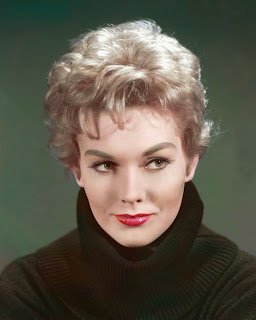CBS has won the rights to a new half-hour comedy that will be executive produced by Oscar winners Ben Affleck and Matt Damon. The show, More Time With Family, will star comedian Tom Papa and has been given a put pilot commitment. According to Deadline, the comedy “centers around a guy (Papa) who changes his career and gives up a life on the road to spend more time at home with his family.” The project was originally created between Damon and Papa, who have worked together on several films including "The Informant!" and HBO’s Liberace film "Behind the Candelabra." The two have agreed to team up with Ben Affleck’s company Pearl Street Films and 20th Century Fox to produce the show. Source: www.pastemagazine.com
Matt Damon as Mark Whitacre in "The Informant!" (2009) directed by Steven Soderbergh
Damon is superb as a demonically smart guy who comes across as rather dim. Is Whitacre a knight in shining armor, a compulsive liar, playing secret agent or plagued by mental illness? Or is he all of the above?
With his earnest demeanor and straightforward delivery, Damon convincingly obfuscates Whitacre's motives. We don't question his veracity as much as try to muddle through it. A big part of the fun is piecing together the puzzle that is Whitacre. In a strange but fascinating touch, Damon voices his inner monologue. Often, his thoughts — an inane stream of consciousness — seem wholly unrelated to what's going on around him, which adds an intriguing absurdist quality to an already quirky tale. We come to realize Whitacre is the least reliable narrator in an already slippery setting. Source: usatoday30.usatoday.com
Kim Novak in "Vertigo" (1958) directed by Alfred Hitchcock
Kim Novak's Bipolar Disorder: After leaving her hand and footprints in concrete at Grauman's Chinese Theater (a signal honor for actors and actresses), Kim Novak was interviewed by Bob Osborne, the host of Turner Classic Movies. In front of a small live audience, she revealed for the first time that she has bipolar disorder, and that it played a role in her decision to leave Hollywood so long ago.
The Los Angeles Times quoted Kim as saying, during the interview, that her father suffered from depression and there was a great deal of conflict at home during her chldhood. She also said she wasn't diagnosed with bipolar until much later in life. Now, she indicated, she takes medication, but as her condition was undiagnosed, not treatment was available for her then. "I go through more of the depression than the mania part," she said. Kim told Osborne that she "plans to hold an exhibition of her paintings for the first time next year, and will devote the proceeds of any sales to mental health philanthropies." Source: bipolar.about.com
Following months of speculation about Amanda Bynes' mental illness, a new report indicates that the star has both schizophrenia and bipolar disorder. The formal diagnosis was made while Amanda was still being treated at UCLA Medical Center, which she recently left for a rehab center in Malibu. “It was difficult to process for her parents," a source said, despite the fact that Amanda Bynes' mental illness was what they both expected. Source: www.thehollywoodgossip.com
Catherine Zeta Jones in "Side Effects" (2013) directed by Steven Soderbergh. Catherine Zeta-Jones has recently battled bipolar II disorder and checked into a health care facility for treatment.
The Bipolar Boom: "In the United States, people with depression, bipolar, and schizophrenia are losing twelve to twenty years in life expectancy compared to people not in the mental health system.” Robert Post added: “Right now, fifty years after the advent of antidepressant drugs, we still don’t really know how to treat bipolar depression. We need new treatment algorithms that aren’t just made up.” Although “bipolar” illness is a diagnosis of recent origin, first showing up in the APA’s Diagnostic and Statistical Manual in 1980 (DSM-III), medical texts dating back to Hippocrates contain descriptions of patients suffering from alternating episodes of mania and melancholia. Jules Baillarger, dubbed this illness la folie à double forme. In his 1969 book, Manic Depressive Illness, George Winokur at Washington University in St. Louis treated unipolar depression and bipolar illness as separate entities."
Gateways to Bipolar: "Today, according to the NIMH, bipolar illness affects one in every forty adults in the United States, and so, before we review the outcomes literature for this disorder, we need to try to understand this astonishing increase in its prevalence. Psychotropic drugs—both legal and illegal—have helped fuel the bipolar boom. In 2003, former NIMH director Lewis Judd and others argued that many people suffer “subthreshold” symptoms of depression and mania, and thus could be diagnosed with “bipolar spectrum disorder.” There was now bipolar I, bipolar II, and a “bipolarity intermediate between bipolar disorder and normality,” one in every four adults now falls into the catchall bipolar bin, this once-rare illness apparently striking almost as frequently as the common cold. Four million American adults under sixty-five years old are on SSI or SSDI today because they are disabled by mental illness. One in every fifteen young adults (eighteen to twenty-six years old) is “functionally impaired” by mental illness."
-"Anatomy of an Epidemic: Magic Bullets, Psychiatric Drugs, and the Astonishing Rise of Mental Illness in America" (2010) by Robert Whitaker.
Subscribe to:
Post Comments
(
Atom
)























No comments :
Post a Comment